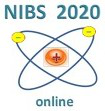Speaker
Description
Global models of plasma discharges are a standard tool in plasma fluid simulations incorporating complicated chemistry. These models use global balances of energy and conservation of species number in order to estimate volume averaged number densities and temperatures of plasma components. Simple semi-analytic estimates of species density profiles valid in a wide range of parameters are used in order to include wall fluxes. Due to the nature of wall flux estimation, the global models are limited to single chamber designs.
In this paper we present the development of interface boundary conditions that allows the use of conventional global models for separate chambers. Additional source terms corresponding to interface boundary conditions provide closure for simulations of multi-chamber ion sources. We use an extension of the Global Enhanced Vibrational Kinetic Model (GEVKM) [1] with updated hydrogen plasma chemistry [2] to model multi-chamber negative hydrogen sources. We compare newly developed interface boundary conditions based on the fluid approximation with the thermal flux approximation [3]. We present preliminary results of simulations using different interface boundary conditions for the negative hydrogen ion source at IPP Garching. We compare our new two-chamber model results to previous fluid simulation results and experimental measurements.
[1] Averkin S.N. et al, “A Global Enhanced Vibrational Kinetic Model for High Pressure Hydrogen RF Discharges”, IEEE Trans. Plasma Sci., Vol. 43, N. 6, pp. 1926-1943, 2015.
[2] Yang W. et al, “Benchmarking and Validation of Global Model Code for Negative Hydrogen Ion Sources”, Phys. Plasmas, 25, 113509, 2018.
[3] Averkin S.N. and S. A. Veitzer, “Global Model of Multi-Chamber Negative Hydrogen Ion Sources with Updated Hydrogen Plasma Chemistry”, 10th Int. Partile Accelerator Conf.(IPAC'19), Melbourne, Australia, 19-24 May 2019.
*This work was performed under the auspices of the Department of Energy, Office of Basic Energy Sciences Award #DE-SC0009585

